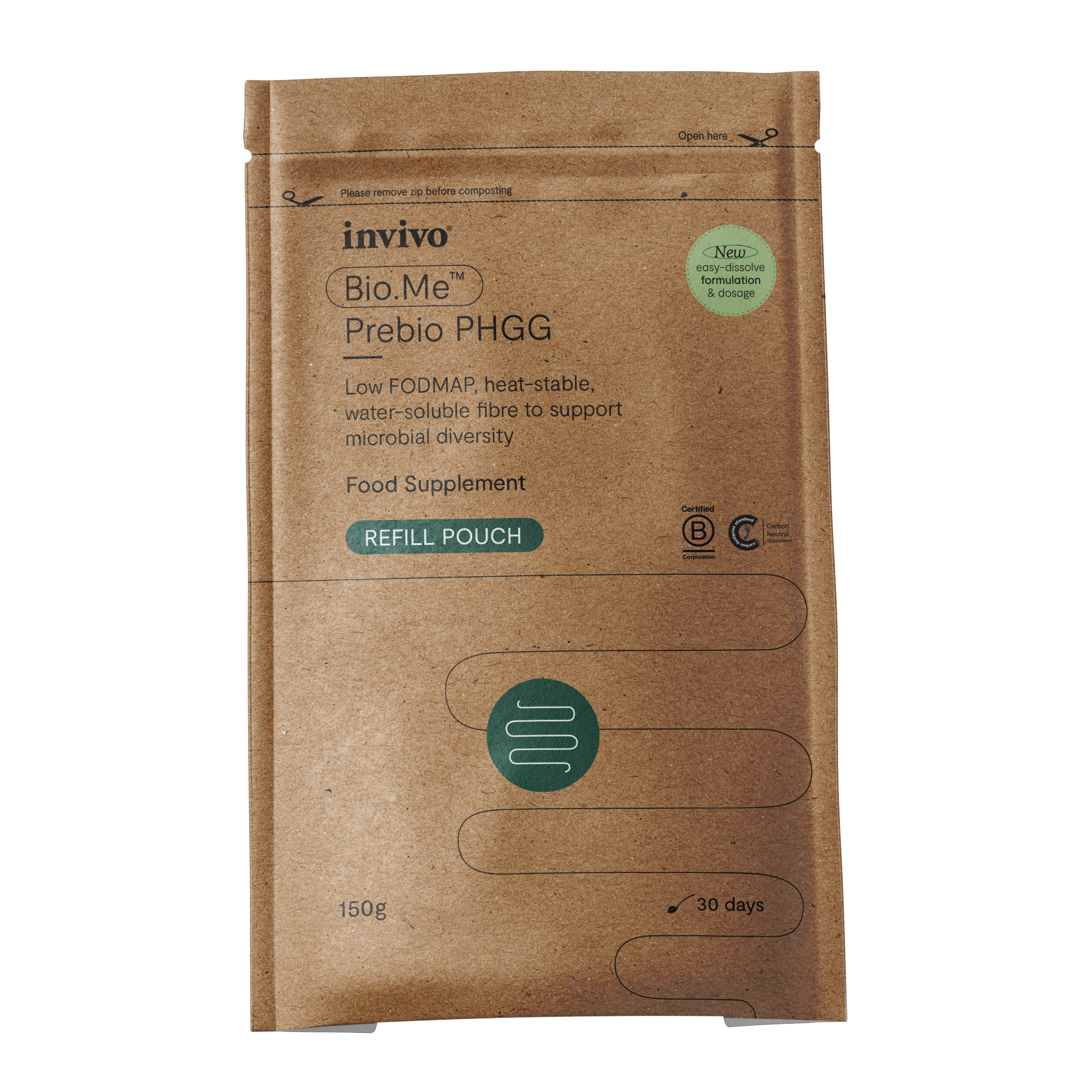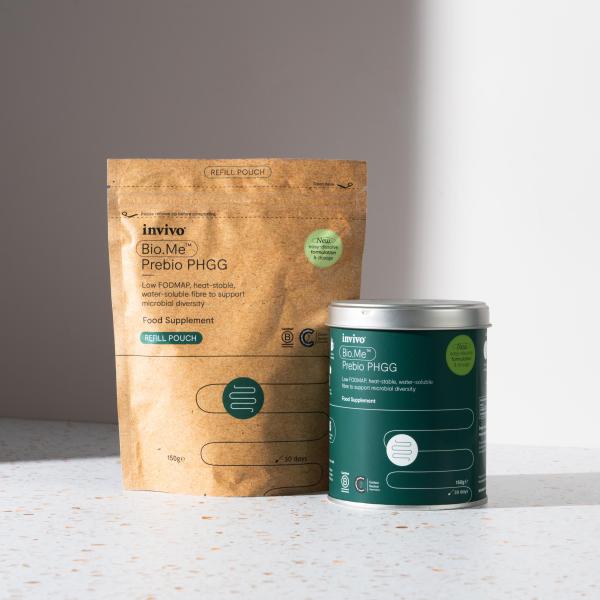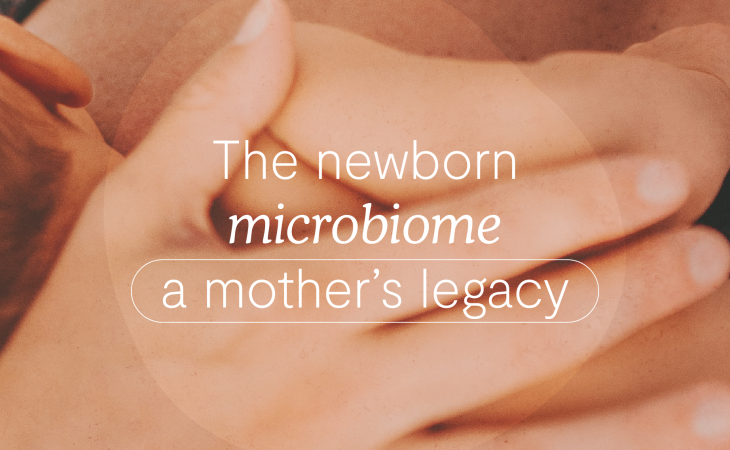We can inherit many things from our parents, the colour of our eyes, our height, even various likes and dislikes. When it comes to health, one of the most important things our mothers pass on to us, are the microbes that act as a starter kit for our own microbial communities. In this article we delve into the origins of our microbiomes, to discover which microbes we inherit and where they come from.
How do newborn babies acquire their microbiome?
For centuries it was believed that the foetus develops in a sterile environment inside the womb. Advances in DNA sequencing technology challenged this notion1 when microbes were found to be present in amniotic fluid, umbilical cord and placenta samples, suggesting that maternal transmission of bacteria could begin before a baby is born2. However, most studies have focused on microbiome profiling between different organs and thus provide only indirect evidence of transmission. Some researchers also claim that microbial presence is more likely due to contamination, as the placenta and uterus contain very little biomass.3
While research into this area continues, what is clear is that a newborn’s microbiome is extensively established at birth – whether by vaginal birth or caesarean section.
Different parts of the mother’s body act as microbial reservoirs, ready to seed a baby’s microbiome. These microbes translocate via vaginal fluids (during a vaginal birth), skin contact, and breastfeeding. Whilst the vaginal microbiome is often thought of as the main starter culture for the infant microbiome, research in fact shows that the maternal gut contributes most of the species that populate a newborn’s microbiome, followed by species from the skin, tongue, vagina, and breastmilk.4
Let’s look more closely at the types of microbes we inherit.
Which types of bacteria do we inherit?
Most of the bacteria that colonise a newborn’s microbiome are Actinobacteria and Bacteroidetes derived from the maternal gut4 . They include certain species of Bifidobacterium, such as B. breve, B. infantis, and B. longum, which enable the baby to digest prebiotic human milk oligosaccharides (HMO) in breastmilk5.
Compared to more transient strains transmitted via the skin, tongue, and vagina, strains from the maternal gut are more likely to establish themselves and “stick” in the baby’s gut4. Several of the Bacteroidetes species go on to become some of the most prevalent species in the adult gut microbiome6. It is hypothesised that species like B. dorei and B. vulgatus survive the transition from childhood to adulthood by adapting to changes in the gut and immune system4.
Alongside Bacteroidetes and Actinobacteria, we also inherit several strains of Firmicutes from our mothers, but only Streptococcus thermophilus and Veillonella parvula are thought to persist beyond the first few weeks of life. Other Firmicutes rely on sporulation as a means of survival, and while some spore-forming bacteria are found in a baby’s microbiome, most are acquired later and become much more abundant in the adult microbiome7.
How does a Caesarean birth influence the infant microbiome?
During a caesarean birth, a baby’s initial encounters with microbes are through contact with its mother’s skin and the hospital surroundings. Entering the world this way leads to differences in microbial colonisation in the first few moments of life, compared to vaginal delivery.
Studies show that babies born via C-section tend to host fewer Bacteroidetes and a greater abundance of more opportunistic organisms like Clostridium8, Klebsiella, Enterobacter, and Enterococcus species9 found in the hospital environment. Other studies report that C-section newborns host microbial communities similar to those found on the skin, dominated by Staphylococcus, Corynebacterium, and Propionibacterium spp., whereas vaginally delivered babies carry more of the Lactobacillus spp. usually found in the vagina10.
Interestingly, these differences in early colonisation shift again in the first few weeks of life during which time a baby encounters a wider range of microbial sources. Research suggests that even by 6 weeks of age, a newborn’s microbiomes will have expanded and diversified according to where they are on the body (e.g. oral, gut, nasal), with no discernible differences in the microbial community structure or function between C-section babies and those born vaginally11.
Home birth or hospital birth
Where a baby is born is another factor shaping the newborn microbiome. Many routine hospital interventions such as antibiotics, early infant bathing with soap, and vaginal washes have the potential to alter microbial transmission and influence both infant and maternal microbiomes12.
This is reflected in studies that show significant differences in the faecal microbiota of babies born vaginally in hospital compared to those born vaginally at home. Babies born in hospital have been observed to have comparatively lower levels of Bacteroidetes, Bifidobacterium, and Ruminococcus, and higher levels of Enterobacteriaceae and Clostridium12.
Breastfeeding and the microbiome
Breastmilk is a rich source of commensal bacteria including staphylococci, streptococci, lactobacilli and bifidobacteria13. These microbes help seed the newborn gut and oral microbiomes — and possibly even the respiratory microbiome when the baby inadvertently aspirates breastmilk during feeding14.
It is not yet fully understood how the bacteria end up in breastmilk, although one theory is a gut-breast route facilitated by monocytes from the intestinal immune system13. The bacteria are thought to translocate more frequently during the late stages of pregnancy when the regulation of tight junctions in the gut changes14.
What else shapes the newborn microbiome?
Along with how and where a baby is born and how it is fed, several other factors help to shape the microbiomes in the first few weeks of life. These include:
Maternal and/or infant antibiotics: prophylactic antibiotics given during labour to prevent neonatal infections are associated with decreased relative abundances of Bacteroides and Bifidobacterium and increased relative abundances of genera Enterococcus and Rothia as detected in newborn oral and stool samples15.
Having older siblings: the presence of older siblings (as compared to no siblings), is associated with a greater abundance of Bifidobacteria in a newborn’s microbiome8.
Whether the family has a furry pet or not. A large subsample from the Canadian Healthy Infant Longitudinal Development Study (CHILD) showed that pre and postnatal exposure to furry pets results in a greater abundance of Oscillospira and/or Ruminococcus, which are negatively associated with childhood allergic diseases and childhood obesity16.
When exclusive breastfeeding ends. By 3 months of age, there are known differences in microbial composition between babies who have been exclusively or partially breastfed and those who are no longer fed breastmilk. In the CHILD study, the gut microbiomes of exclusively breastfed babies were shown to be enriched with strains of Haemophilus, Streptococcus, and Veillonella, compared to enrichment with Blautia, Streptococcus, and Lachnospiraceae in babies no longer fed breastmilk17.
Conclusions
Pregnancy, birth, and the first few weeks of life are critical periods for establishing a baby’s microbiomes. The mother’s health during pregnancy, the type of birth, antibiotic interventions, and even the presence of a family pet may all influence the composition and function of a newborn’s microbial communities. Expanding research in this area highlights the importance of nurturing maternal microbiomes to ensure a healthy legacy is passed on.




